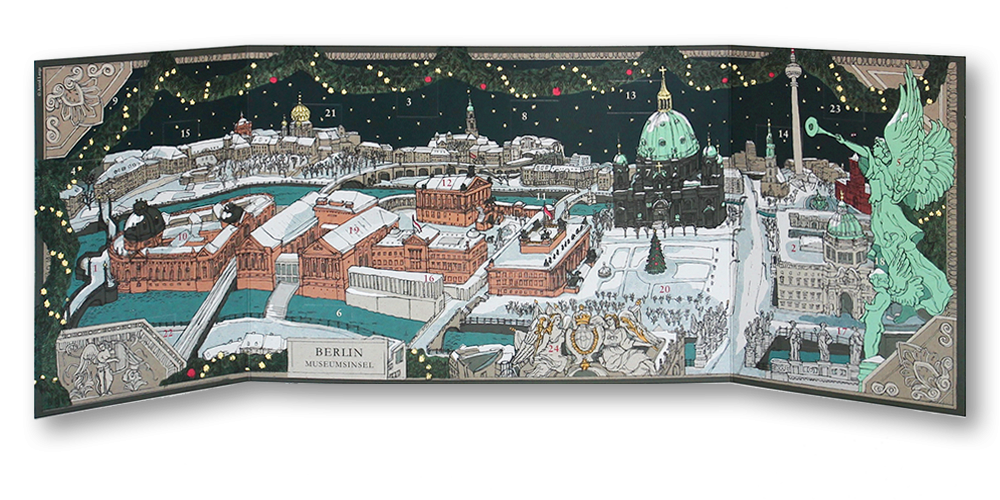Berlin zur Weihnachtszeit entdecken – mit dem Museumsinsel-Adventskalender
Hier öffnet sich ab dem 1. Dezember 2025 jeden Tag ein Kalendertürchen mit spannenden Infos rund um das Türchenbild.
Kunst und Geschichte in 24 Überraschungen.
Tauchen Sie ein in die faszinierende Welt rund um die Berliner Museumsinsel – Tag für Tag, Fenster für Fenster. Der mit großer Liebe zum Detail illustrierte Adventskalender zeigt die Museumsinsel im winterlichen Glanz und lädt zu einer künstlerischen Reise durch eines der bedeutendsten Kulturensembles Europas ein.
24 Türchen – 24 kleine Entdeckungen
Ob Pergamonmuseum, Fernsehturm oder Berliner Dom – hinter jedem Fenster verbirgt sich ein kleines Detail und eine interessante Geschichte.
Besonders geeignet als Mitbringsel oder Postgruß
Dank passendem Kuvert können Sie den Kalender ganz einfach verschicken – an Freunde, Familie oder Berlin-Liebhaber weltweit.
